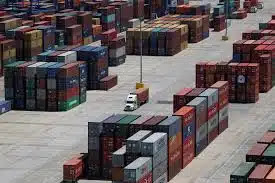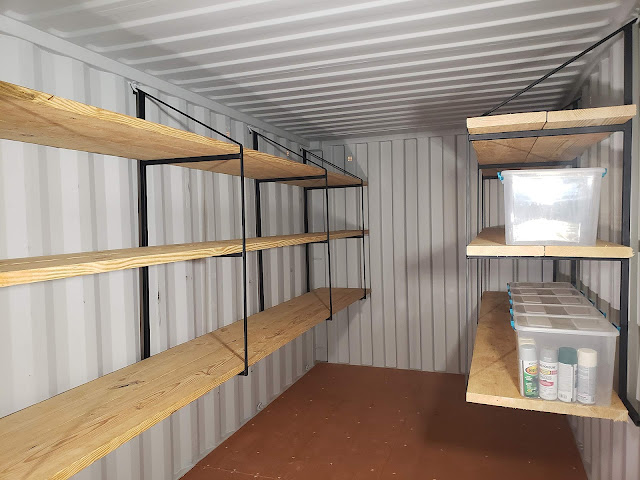Navigating Container Shipping Rates in the USA: Complete Guide
 |
Container shipping plays a vital role in global trade, facilitating the transportation of goods across countries and continents. In the United States, with its robust economy and extensive international trade relationships, understanding container shipping rates is crucial for businesses and individuals involved in importing or exporting goods. In this blog post, we will delve into the intricacies of container shipping rates in the USA, USP Container Shipping discussing the factors that influence pricing, trends in the industry, and tips for optimizing shipping costs.
Factors Influencing Container Shipping Rates
- Supply and Demand: The principle of supply and demand heavily impacts container shipping rates. When the demand for shipping exceeds available capacity, rates tend to rise. Conversely, during periods of oversupply, rates may become more competitive.
- Fuel Costs: Fuel prices play a significant role in container shipping rates, as fuel expenses account for a substantial portion of shipping costs. Fluctuations in oil prices can directly impact shipping rates, with higher fuel costs leading to increased rates.
- Container Availability: The availability of containers can impact shipping rates. In recent years, container shortages have been a concern in the industry, driving up rates due to limited supply.
- Trade Routes: The specific trade routes involved in shipping also affect rates. Distances, congestion, and infrastructure along the chosen routes influence the overall cost of transportation.
- Seasonality: Shipping rates can vary seasonally due to factors such as peak shipping seasons, holidays, and weather conditions. During peak seasons, rates may rise due to increased demand.
Trends in Container Shipping Rates
- Impact of COVID-19: The COVID-19 pandemic disrupted global supply chains and container shipping. Lockdowns, reduced production, and port congestion resulted in fluctuations in shipping rates. Additionally, increased demand for shipping essential goods, such as medical supplies, led to higher rates.
- Capacity Constraints: Container shortages and port congestion have become common challenges in recent years. The demand for containers has outpaced supply, leading to higher rates. As a result, shipping companies have implemented various strategies, such as container repositioning, to alleviate these constraints.
- Sustainability Initiatives: The focus on sustainability and environmental concerns has influenced container shipping rates. Some carriers have implemented surcharges to support eco-friendly initiatives, such as the use of cleaner fuels or investments in carbon offset projects.
Tips for Optimizing Container Shipping Costs
- Plan Ahead: By planning shipments in advance, businesses can take advantage of lower rates and secure available space. Last-minute bookings tend to be more expensive, so early planning can help optimize costs.
- Consolidation and Optimization: Consolidating shipments or utilizing container optimization techniques can help reduce costs. Sharing container space with other businesses or optimizing packaging to maximize container utilization can lead to significant savings.
- Negotiate with Carriers: Building strong relationships with shipping carriers and negotiating rates can be beneficial. Regularly reviewing and comparing rates from different carriers can help businesses secure better deals.
- Use Technology and Data: Leveraging technology solutions that provide real-time tracking, analytics, and insights can help optimize shipping operations. By analyzing data, businesses can identify inefficiencies, make informed decisions, and streamline processes to reduce costs.
- Work with Freight Forwarders: Collaborating with experienced freight forwarders can simplify the shipping process and provide access to competitive rates. Freight forwarders have industry knowledge, established relationships with carriers, and can offer guidance on navigating shipping complexities.
Conclusion
Container shipping rates in the USA are influenced by several factors, including supply and demand, fuel costs, container availability, trade routes, and seasonality. Understanding these factors and staying informed about industry trends is crucial for optimizing shipping costs.
By planning ahead, consolidating shipments, negotiating rates, leveraging technology, and working with freight forwarders, businesses, and individuals can navigate the complexities of container shipping rates effectively. With careful consideration and proactive measures, it is possible to mitigate costs and enhance efficiency in the shipping process.
Must Read: Why Choose shipping container bar is Best for Us: 10 Reasons
Must Read: How to Use Shipping Containers in Your Warehouse
FAQ
Question: How do you calculate freight charges on a container?
Answer: The amount is calculated by multiplying the tonnes or cubic metres (CBM) of the shipment by the freight company's LCL base rate. The volume of an item with dimensions of one metre in width, one metre in length, and one metre in height is measured in CBM.
Question: How much does a container ship charge per container?
Answer: A 40-foot shipping container is listed by International Van Lines between $1,500 and $7,000 in price. This broad price range is due to elements including volume, distance, and timing.
Question: How do you understand freight rates?
Answer: Freight Rate, the price of moving goods, takes into account a variety of elements in addition to standard transportation expenses. Mode of transportation (truck, ship, rail, or aircraft), weight, size, distance, pickup and delivery locations, and the actual products being delivered are the primary determinants of freight pricing.
Question: How do you calculate the container fill rate?
Answer: It is easy to calculate the fill rate. The ratio of fully dispatched customer orders to total customer orders is calculated. That amount will become your fill rate in the form of a percentage when you increase it by 100.
Question: What is the shipping calculator?
Answer: The shipping calculator makes use of fundamental data to provide you with a close-to-accurate estimate of the shipping costs. Knowing the cargo's origin and destination, the earliest possible shipping date, the type of cargo being delivered, and the origin and destination of the cargo are all examples of this.



Comments
Post a Comment